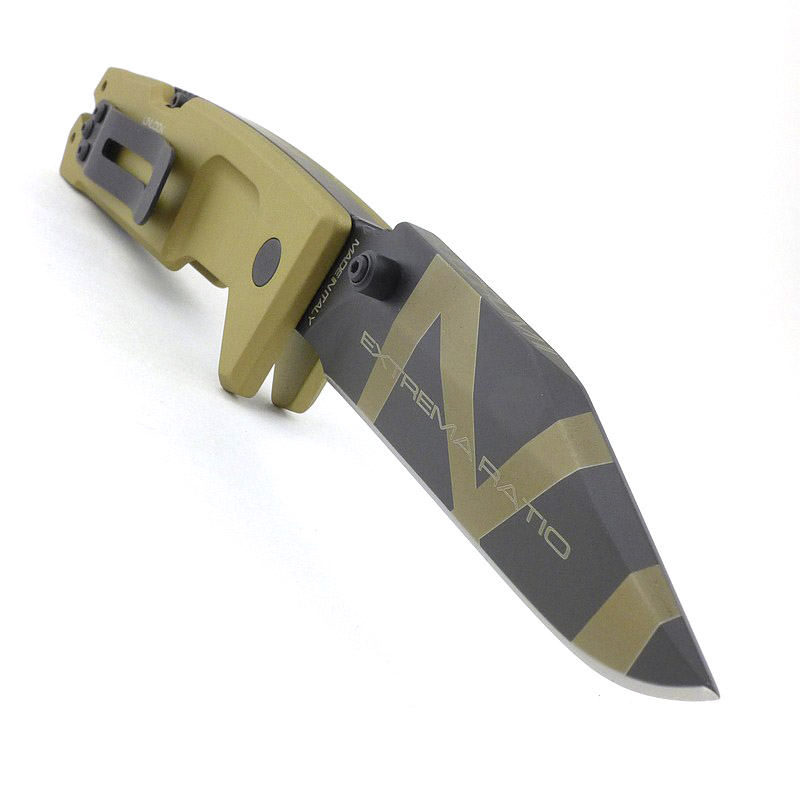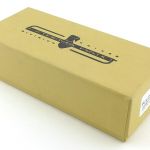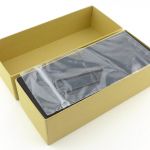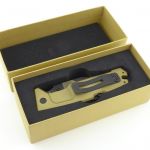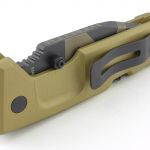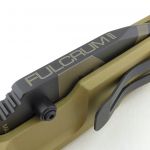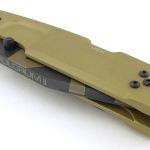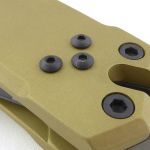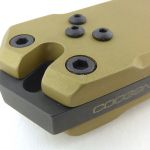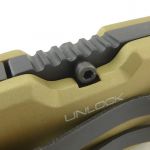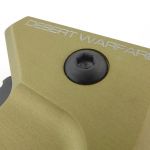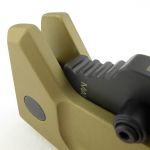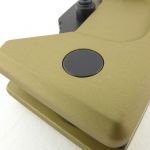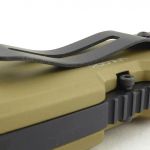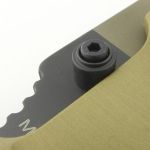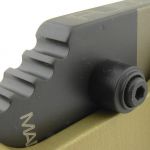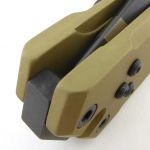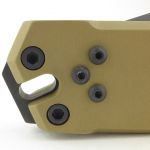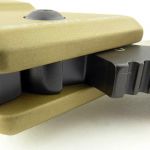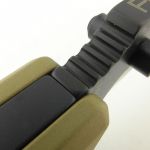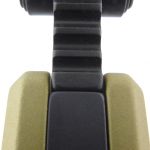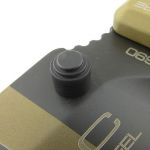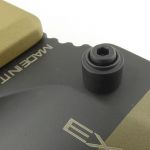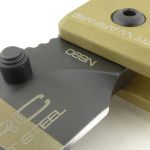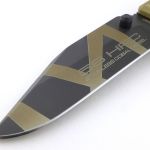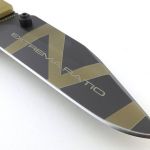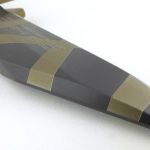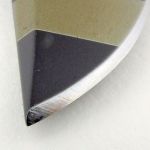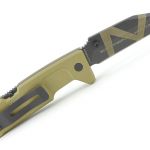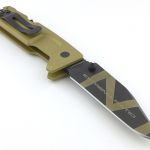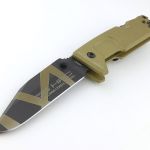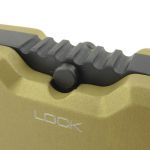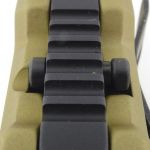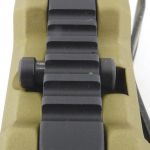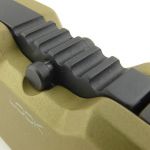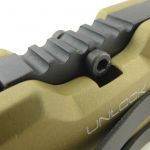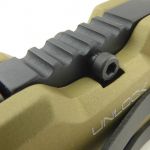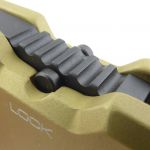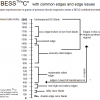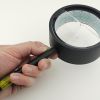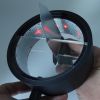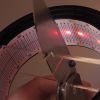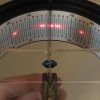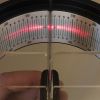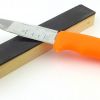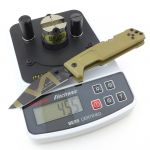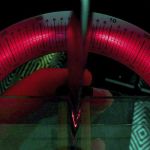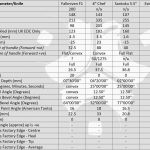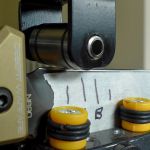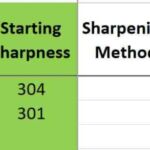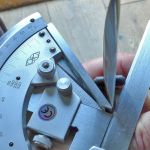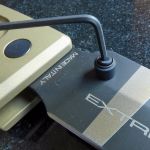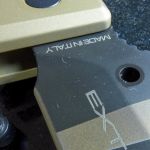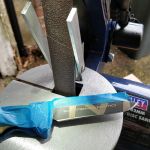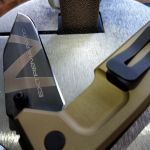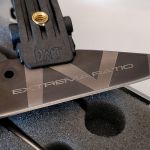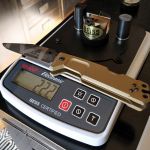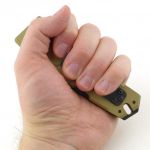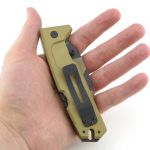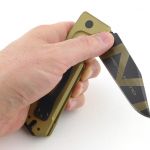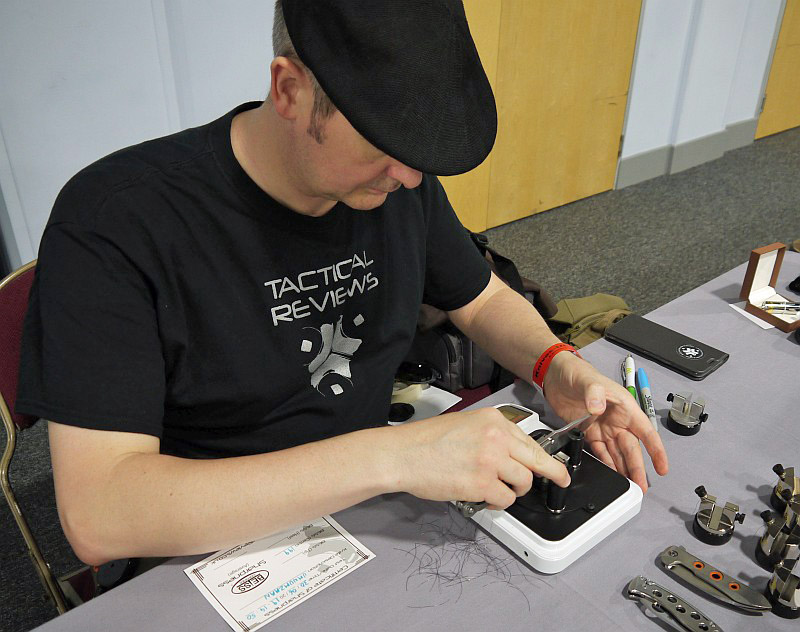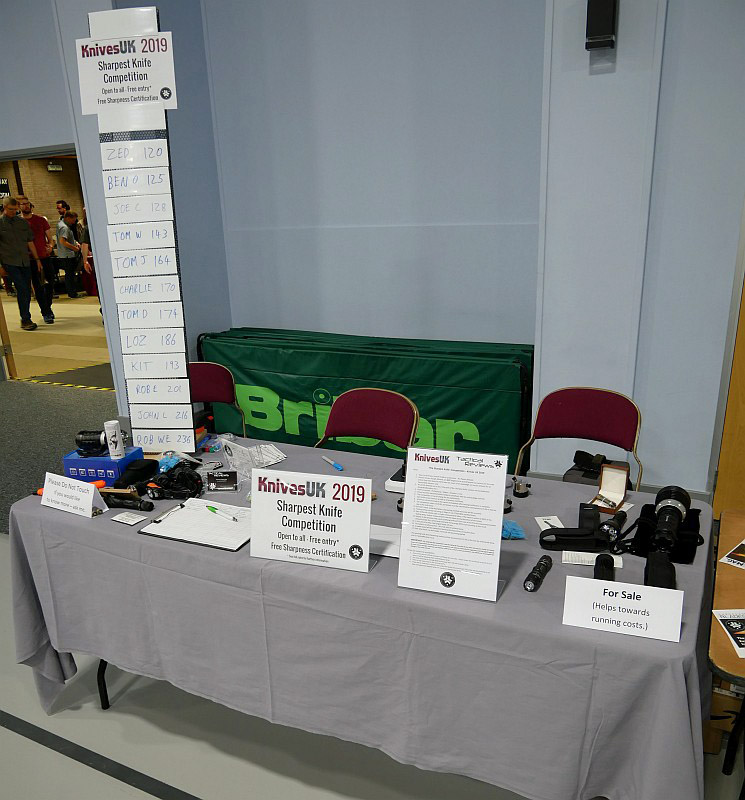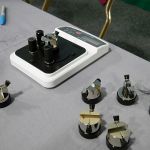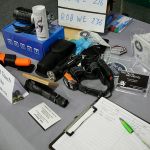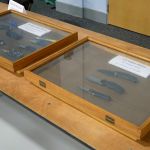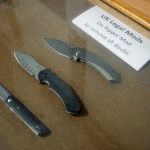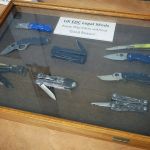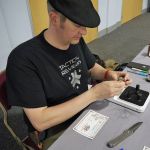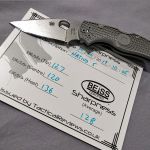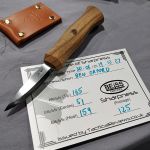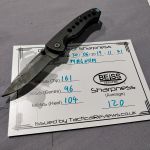Extrema Ratio have built a reputation for making super strong knives; in this review of the Fulcrum II D ‘Heavy Folder’, we are taking that detailed ‘Tactical Reviews look’ at this re-launched folding knife. ‘Overbuilt’ is often used to describe knives with heavy construction, but is not how I would describe Extrema Ratio’s Fulcrum II. ‘Overbuilt’ suggests excessive design, but behind every Extrema Ratio design is a purpose and intent to give the owner confidence in a tool that won’t let them down. Initially I was sceptical – would the build of the Fulcrum II hamper its usefulness? But it has surprised me; read on to find out more.
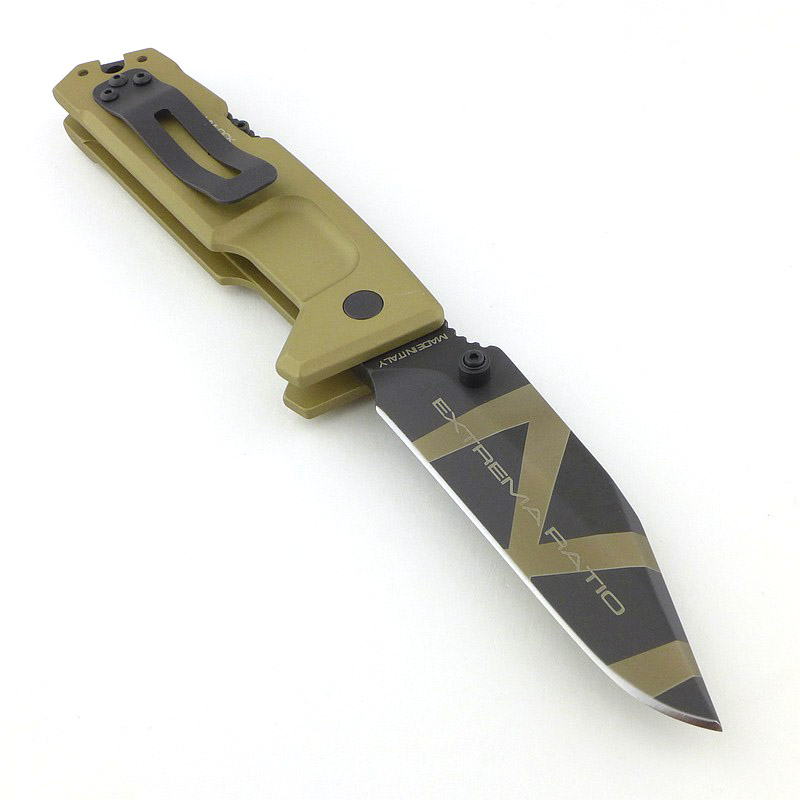
A few more details:
What’s in the box?:
A good look round the Fulcrum II – Things to look out for here are:
As you look round the Fulcrum II you will see how the design has been kept simple yet functional and how solid every part is.
The Locking-Lock:
There are other knives that have a secondary lock to secure the main lock of an open folder, and there are assisted-openers that have a safety lock to prevent the blade springing open in your pocket, but I have yet to come across another folding knife with a secondary lock quite like the one on the Fulcrum II.
A back-lock mechanism uses the lock-bar’s spring to hold the blade in the folded position and then to keep the lock engaged when the blade is open. The lock-bar needs to move to allow the blade to open and close.
In the Fulcrum II, there is a secondary manual lock that locks the lock-bar itself, preventing from moving at all. This means if the blade is closed, it cannot be opened, and if opened the lock cannot be released to allow it to fold. This single secondary lock can secure the blade in either the opened or closed position.
As this is not something that would be obvious to everyone, one use-case for this is to prevent someone taking the folded knife off you and then using it against you (unless they know). The more likely use being to effectively make the folding knife a fixed blade knife ensuring that it cannot be accidentally closed.
Explained by the Maker:
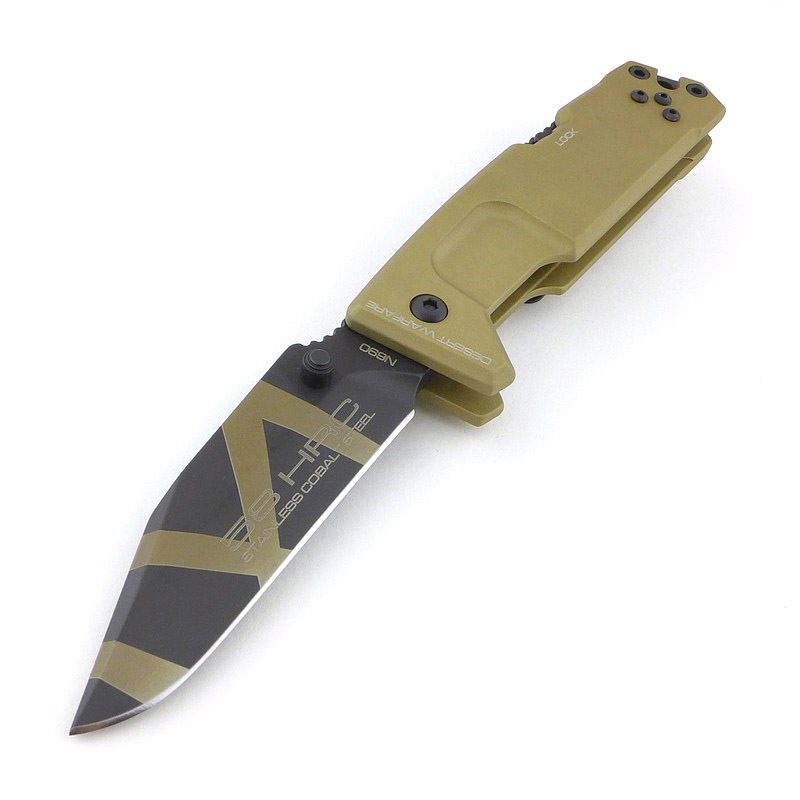
The following text is from Extrema Ratio’s own product description.
This model is the evolution of the FULCRUM Folder (out of production since 2005), the first folding knife produced by Extrema Ratio according to the specifics of an Italian counter-terrorism unit. The FULCRUM II is basically identical to its predecessor, the only variations being the addition of a reversible clip and a partially lowered surface on the handle which improves the ergonomics and makes operating the opening pin easier. A manual security lock holds the BACK-LOCK mechanism lever, preventing accidental unlocking of the blade block during heavy-duty use. It can also be used to lock the knife closed in the event it’s taken away from the user: then the FULCRUM cannot be opened, even if the mechanism is often irrevocably damaged. The back of the flat-ground blade offers a comfortable resting point for the thumb. The tempered steel tang can be used as glass breaker and is provided with a hole to affix a security cord. Available versions: FULCRUM II D BLACK, FULCRUM II D DESERT WARFARE, FULCRUM II D BLACK RUVIDO, FULCRUM II T BLACK, FULCRUM II T DESERT WARFARE, FULCRUM II T BLACK RUVIDO.
The Blade and Handle – Detailed Measurements:
Now even more detailed!
Taking things far beyond most knife specifications, in this section I will be carrying out a detailed examination of geometry, balance, edge bevels, factory sharpness and structural edge testing using the industry leading measuring tools.
These measuring tools include a Vernier protractor, callipers, fixed radius gauges, the unique Arc Master adjustable radius gauge, Edge On Up’s BESS Certified PT50A and SET tester along with CATRA’s Hobbigoni LASER Edge Protractor.
The BESS ‘C’ scale of sharpness (Brubacher Edge Sharpness Scale) will be used to verify the sharpness of the factory edge and allow the knife to be brought to a minimum standard sharpness before testing a blade’s cutting performance.


The measurements have been tabulated and are presented along with a few reference blades. The ‘Balance relative to the front of the handle’ tells you if the knife will feel front heavy, or if the weight is in your hand (a positive value means the weight is forward of the front of the handle). The ‘Balance relative to the centre of the handle’ indicates how close to a ‘neutral balance’ the knife has in the hand.
The first table in this gallery shows the standard review measurements, however, this is one of the first reviews on Tactical Reviews to feature a new measurement. Using the Edge On Up Structural Edge Tester (SET) to measure the resistance of a knife’s edge to rolling.
This is to be expanded upon in future articles, but for now, in the SET results the key factors are:
Series 1 Degradation – how much damage the edge suffers from one edge rolling cycle. The damage is represented by an increase in the BESS ‘C’ score. (Averages also shown for A and B)
Series 2 Degradation – how much damage the edge suffers from one further edge rolling cycle. (Averages also shown for A and B)
Degradation after strop – has the edge been permanently damaged/chipped or can it be recovered with stropping? A negative number means it actually improved from the starting figure, suggesting there may have already been some rolling of the edge before testing. (Averages also shown for A and B)
The blade is made from BöHLER N690 STEEL (58HRC).
What it is like to use?
Before I could really appreciate the Fulcrum II, the edge needed reworking. Embarking upon this revealed a few things you should be aware of.
The factory edge was very steep, a total inclusive angle of 64 degrees. Taking the BESS sharpness measurements with an average score of 409,and a small thick blade, you have a less than eager cutter. Should you wish to use it as an extraction tool and cut through metal sheeting and pry with it, this edge will quite likely serve you well, but I wanted to know if this knife would also serve for daily tasks.
With such a thick blade and a primary blade grind at 21 degrees my intention was to take the edge angle to 40 degrees inclusive. I’d generally take a pocket knife to 30 degrees inc, but this is not a normal pocket knife and the edge bevel would be getting a bit too wide.
So, check this first photo in the gallery and you will see that the thumb stud creates an angle of about 53 degrees in relation to the edge bevel, making sharpening to anything less than this difficult. The only option is to remove it. Thankfully Extrema Ratio have made the thumb-stud removable and provided the Allen key for it, so no problem there. However, remember that the blade-stop in the closed position IS the thumb-stud, so once you take it off, don’t go closing the blade or you will undo all your hard work.
The major edge bevel angle change was carried out with a small belt grinder. It was taken to a burr and stropped to remove the burr, but I could never quite get it as sharp as I wanted. This might be that the belt needs changing, but before confirming that, I just moved onto a DMT Aligner kit and got the edge shaving sharp. The new edge bevel is significantly wider than the factory edge bevel, especially at the tip (about 4mm wide), so it does change the look somewhat.
In all honesty, on first starting to use the Fulcrum II with the factory edge, I was underwhelmed and thinking I now had an overly heavy folder that was not much use to me; despite having a very satisfying presence. However, the 20dps (degrees per side) edge has totally transformed the Fulcrum II. I cannot recommend enough just putting this edge angle on it straight out of the box.
Changing the edge angle to an inclusive 40 degrees makes this a properly usable knife. You can now appreciate its substantial feel and operation along with its, now useful, cutting performance.
Despite this new edge bevel angle transforming it, the Fulcrum II does still have a very thick blade. It is never going to slice like a thin blade – but who cares?! That clunk of the lock as you open it, the handle size and ergonomics – you know you are holding heavy duty metal.
Ergonomics are good and functional even with the angular look. Thumb-stud opening is firm but not stiff. If anything is over stiff, it is the back-lock spring. Unlocking the blade is quite tough, and I need to change grip specifically to one where I can apply maximum force to the lock – I can’t see this ever releasing accidentally due to a firm grip.
I do find the secondary lock very satisfying. Perhaps oddly, I like locking it closed, keeping the blade safely folded and stopping curious people opening it. Then the secondary lock on the open knife making it close to a fixed blade. This extra level of certainty adding an extra dimension to the Fulcrum II. If I were to express a minor doubt, it is the amount of engagement of this secondary lock. The secondary locking button overlaps the handle slab (to create the block) and does so with less than 1mm of overlap. Enough to function, but not quite in fitting with the solidity of everything else.
Putting it to woodworking duty, the Fulcrum II was a pleasure to use. I didn’t want to stop carving. The new edge bevel, being quite wide, gives it a semi-scandi effect and it was just eating up stick after stick. I did remove the pocket clip as, for me, this significantly improved the ability to work with it for extended periods.
This knife demands attention. Attention simply due to its build and presence, and the attention you need to give it to get it set up right, as you will need to put that proper working edge on it to be able to appreciate it. I like big and heavy folders as long as they can be put to real work – exactly what I’ve been doing with the Fulcrum II.
Review Summary
The views expressed in this summary table are from the point of view of the reviewer’s personal use. I am not a member of the armed forces and cannot comment on its use beyond a cutting tool or field/hunting knife.
Something that might be a ‘pro’ for one user can be a ‘con’ for another, so the comments are categorised based on my requirements. You should consider all points and if they could be beneficial to you.
_______________________________________________
Things I like
_______________________________________________
Proper ‘Heavy Folder’ with respected pedigree.
Secondary lock, completely locking the blade open or closed.
Excellent fit and finish.
Very satisfying action.
Large finger guard.
Ambidextrous pocket clip.
Not that heavy despite solid build.
_______________________________________________
What doesn’t work so well for me
_______________________________________________
Factory edge far too steep at 64 degrees.
Thumb-stud needs to be removed for sharpening.
Relatively shallow blade for its thickness.
For hard use it is much easier on the hands without the pocket clip.
The primary lock is a bit too stiff.
No pouch supplied.
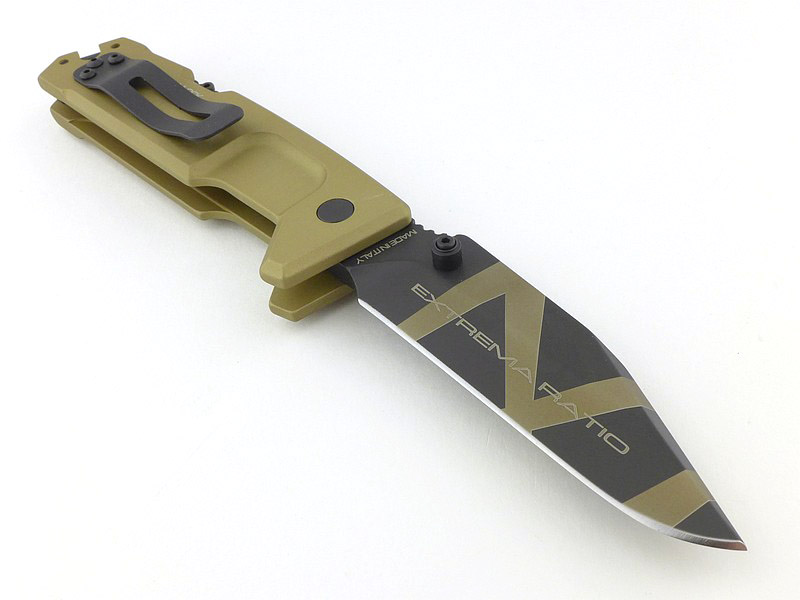
Discussing the Review:
The ideal place to discuss this reviews is on a forum. If you started reading the shorter forum version of the review, but followed the link this full exclusive review, please return to that forum to discuss the review there.
If you read the review entirely on Tactical Reviews, please consider one of the following to join in any discussion.
BladeForums – Knife Reviews (US based Forum for Knife Discussion)
CandlePowerForums – Knife Reviews Section (Largest and Friendliest Flashlight Community Forum)
The BESS Exchange – A forum discussing technical aspects of sharpness and truly understanding your sharpening process.


